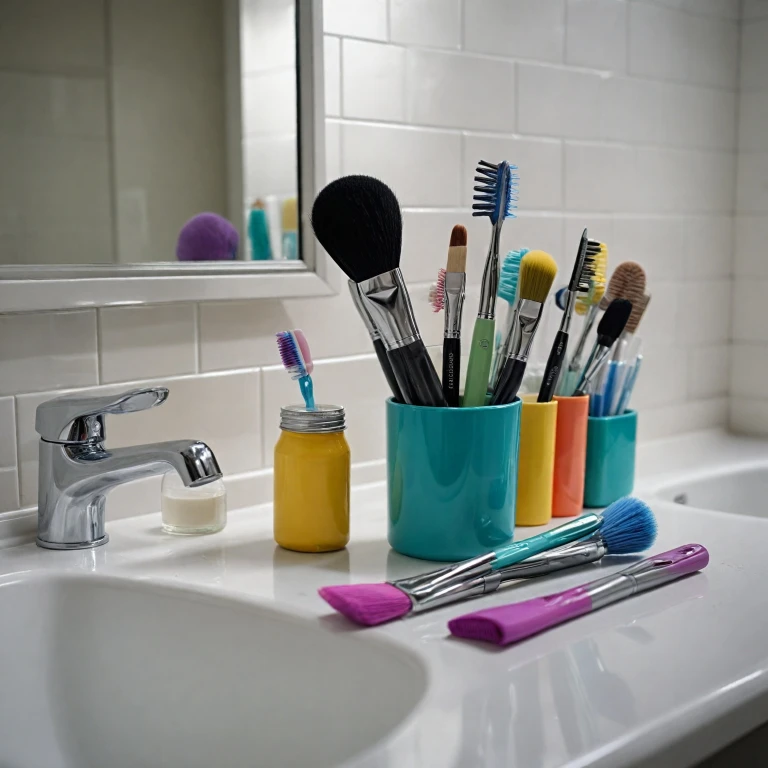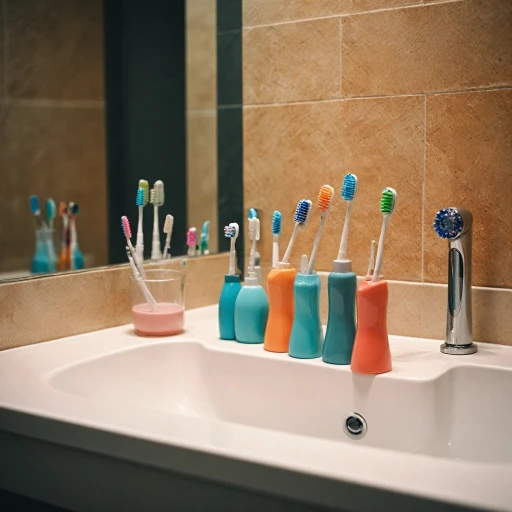Understanding Interproximal Brushes
An Introduction to Interproximal Brushes
Interproximal brushes, often known as interdental brushes, are specialized dental tools designed to clean the spaces between your teeth where regular toothbrushes may not reach effectively. They're a critical component of comprehensive oral hygiene, especially when used in combination with traditional brushing methods. Interproximal brushes come in many sizes and materials, allowing users to choose the best fit for their oral care routine. The brush handle is typically ergonomic, providing better control during use. Some options in the market, like the Tepe interdental brush, emphasize ease of use and durability. Many products are designed with a plastic-coated wire to ensure gentle cleaning around sensitive gum areas.Why Consider Using Interproximal Brushes?
Interproximal brushes are particularly effective at removing plaque and food particles from hard-to-reach areas, contributing significantly to gum health. These brushes tackle spaces that normal brushing misses, thereby reducing the risk of gum disease and tooth decay. Incorporating these brushes into your oral care routine is a step towards achieving a more thorough cleaning, especially if you're dealing with braces, bridges, or crowns. However, the success of these brushes lies in selecting the right product tailored to your dental needs, which will be explored further in the following sections.Benefits of Using Interproximal Brushes
The Value of Incorporating Interproximal Brushes
Interproximal brushes provide significant advantages when it comes to maintaining oral hygiene. They are especially effective at removing plaque and preventing gum diseases, offering a level of cleaning that traditional toothbrushes might not reach.
Here's why using interproximal brushes is beneficial:
- Reach Difficult Areas: Interproximal brushes are designed to clean the spaces between your teeth, an area where standard toothbrushes often struggle. These brushes can effectively reach under the gum line and address plaque in those tight spots, preventing buildup that can lead to oral health problems.
- Versatility in Use: With various size options available, interproximal brushes cater to different gaps between teeth, making them versatile for personalized dental care routines. From soft picks to various pcs interdental options, there's a suitable brush for every need.
- Effectiveness with Plaque Removal: Studies suggest that interproximal brushes remove more plaque than traditional brushing techniques alone. This makes them a valuable component in your dental care arsenal.
- Bio-Based Alternatives: With eco-friendly options like bio-based and plastic-coated brushes available, individuals can make environmentally conscious choices without compromising on dental care quality.
Particularly noteworthy are brands such as Tepe interdental brushes, known for their durability and efficacy in cleaning. Their brushes often come in convenient packs that offer good value for money, with options suited for both sensitive and hard-to-reach areas.
However, to maximize the benefits, it's crucial to ensure you're selecting the right size and type for your specific dental needs. Avoid common pitfalls by familiarizing yourself with usage tips and expert recommendations on interproximal cleaning techniques.
Integrating Interproximal Brushes with Electric Toothbrushes
Synchronizing Electric Toothbrushes with Interproximal Brushes for Maximum Oral Health
Integrating interproximal brushes with electric toothbrushes is akin to having a well-coordinated cleaning team working to keep your oral hygiene at its peak. While the electric toothbrush is adept at removing plaque from the surfaces of your teeth, interproximal brushes, often referred to as interdental brushes, target those hard-to-reach areas between your teeth where regular brushing might fall short. Let's dive into how you can enhance oral hygiene by combining these tools efficiently:- Complementary Actions: Electric toothbrushes serve as the first line of defense against plaque buildup on the tooth surfaces. They vibrate or rotate to effectively disrupt the bacterial colonies on your teeth. Segue this by using an interdental brush to clean between the gaps. This dual approach ensures that not only are the visible areas of your teeth covered, but the interproximal spaces are as well, providing a comprehensive plaque removal strategy.
- Size to Fit: Interproximal brushes come in various sizes to fit different gaps between your teeth. Tepe interdental brushes, for example, offer diverse options that you can view in quick view modes before you add them to your cart. It is essential to select the right size to avoid damaging your gums or failing to clean adequately. Consider using a bio-based product or plastic-coated wire to ensure that even those with sensitive gums can benefit without irritation.
- Gentle Reach: The flexible handles of interdental brushes, such as gum proxabrush or soft picks, allow for easy manipulation and hard reach areas, making them perfect for accessing spaces around orthodontic brackets or beneath dental bridges, which are often areas prone to plaque buildup.
- Adaptation to Needs: Integration should be tailored to individual oral needs. Those with more extensive dental work or gum sensitivity may require softer bristles, whereas someone concerned about eco-friendliness might prefer a bio-based plastic option.
Choosing the Right Interproximal Brush
Factors to Consider When Selecting Interproximal Brushes
Choosing the right interproximal brush is essential for effective oral care. With numerous options available, it can be overwhelming to decide which product best suits your needs. Here are some key factors to consider:
- Size and Fit: Interproximal brushes come in various sizes to fit different spaces between teeth. It's crucial to select a size that can comfortably reach areas without causing discomfort. For those with tighter spaces, smaller interdental brushes or soft picks may be more appropriate.
- Material and Durability: Consider brushes with plastic-coated wire to prevent gum irritation and damage to dental work. Some brands, like TePe interdental brushes, offer bio-based options that are environmentally friendly.
- Handle Design: A comfortable handle can make a significant difference in ease of use. Look for designs that offer a firm grip to ensure precise cleaning.
- Packs and Stock: Evaluate the pack size and product stock availability. Purchasing a pack with multiple brushes can be cost-effective and ensure you always have a brush on hand.
- Price and Value: While price is an important consideration, it's essential to balance cost with quality. Investing in a reliable product can enhance plaque removal and overall dental health.
By considering these factors, you can select an interproximal brush that complements your electric toothbrush routine, ensuring comprehensive cleaning and oral health maintenance. Remember to periodically review your choice as your dental needs may change over time.
Common Mistakes and How to Avoid Them
Key Mistakes When Using Interproximal Brushes
Interproximal brushes can be a valuable addition to your oral hygiene routine, but their effectiveness depends greatly on correct usage. Let's identify some pitfalls to avoid for optimal results.
- Choosing the Incorrect Size: Finding the right fit is crucial. A brush that's either too small or too large won't efficiently clean between teeth. Check product descriptions, often available in quick view sections online, to ensure you select the right size for your interdental needs.
- Overlooking Gum Health: While effective plaque removal is key, it shouldn't be at the expense of your gum health. Brushes such as the Tepe interdental and gum proxabrush offer soft picks and coated wire options, which are especially gentle on gums.
- Improper Handling: How you hold the brush affects its reach in targeting hard-to-reach areas. Ensure you have a solid grip on the handle for precise control, enhancing cleaning effectiveness.
- Frequent Replacement Neglect: Regular replacement of your interdental brushes helps maintain cleaning efficiency. Most brands, like the bio-based and betweens proxabrushes, come with guidance on how often they should be swapped.
- Inefficient Use of Plastic Coated Options: Interdental brushes with plastic coating are designed for specific dental situations. If your daily needs include handling sensitive dental spots, ensure your pack includes these standouts.
Avoiding these common mistakes can greatly enhance the benefits you reap from your brushes. Just like choosing a suitable electric toothbrush, selecting the correct interproximal brush can make all the difference in the maintenance of your teeth and gums. Make sure to check product stocks and add to your cart wisely, considering both price and necessity.
Expert Opinions and Recommendations
Expert Guidance: Optimizing Usage of Interproximal Brushes
To ensure you get the most from your interproximal brushes and maintain excellent oral hygiene, several experts share invaluable tips. Integrating these brushes with your dental routine, especially when using an electric toothbrush, provides an optimal cleaning experience by effectively reaching areas that traditional brushing might miss. Consider these refined best practices to maximize the benefits:- Proper Technique: Gently insert the interdental brush without forcing it. The soft picks or bio based options may be preferable for sensitive gums.
- Keep Stock: Ensure you have a reliable stock of brushes in various sizes to accommodate different interdental spaces, especially if you use products like the tepe interdental brushes or gum proxabrush.
- Right Product: Select brushes with appropriate handle and coated wire options to reduce discomfort and enhance reach. The tepe interdental choices are often recommended for their ease of use and effectiveness.
- Frequent Replacement: Replace your dental brush regularly, maintaining an ample pack in your oral care routine. Brush durability and handle design may vary between brands, influencing how often you replace.


